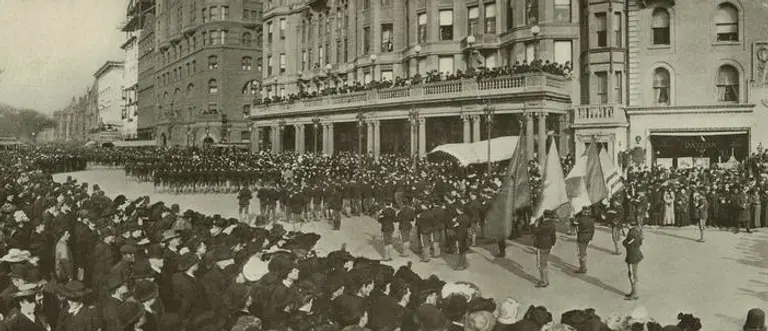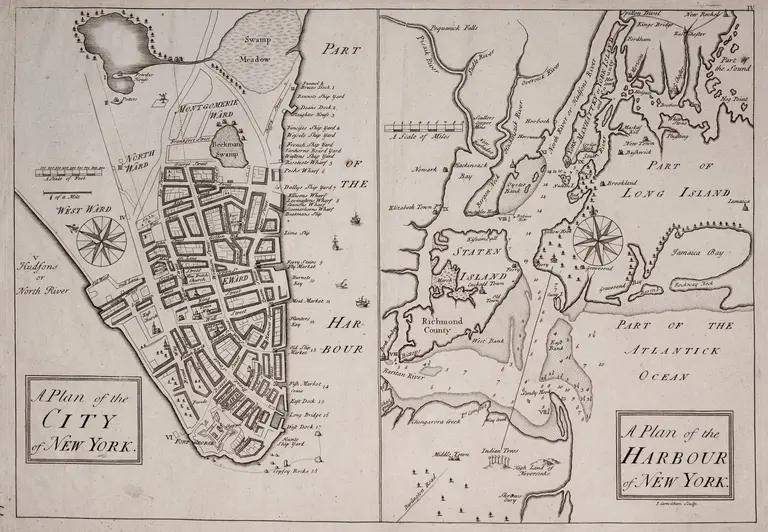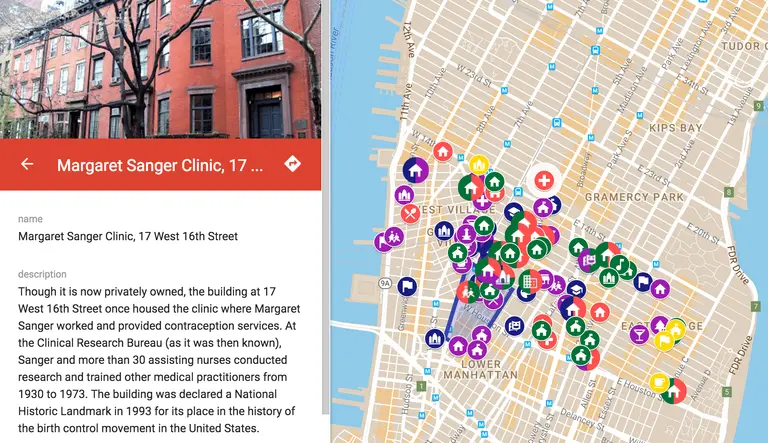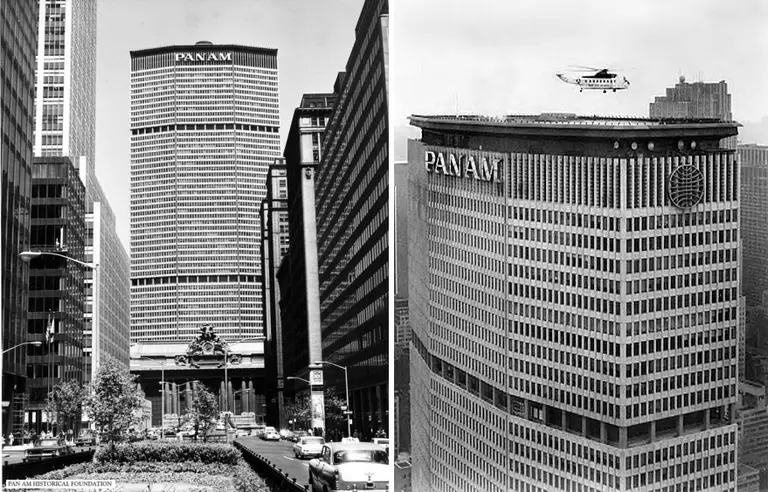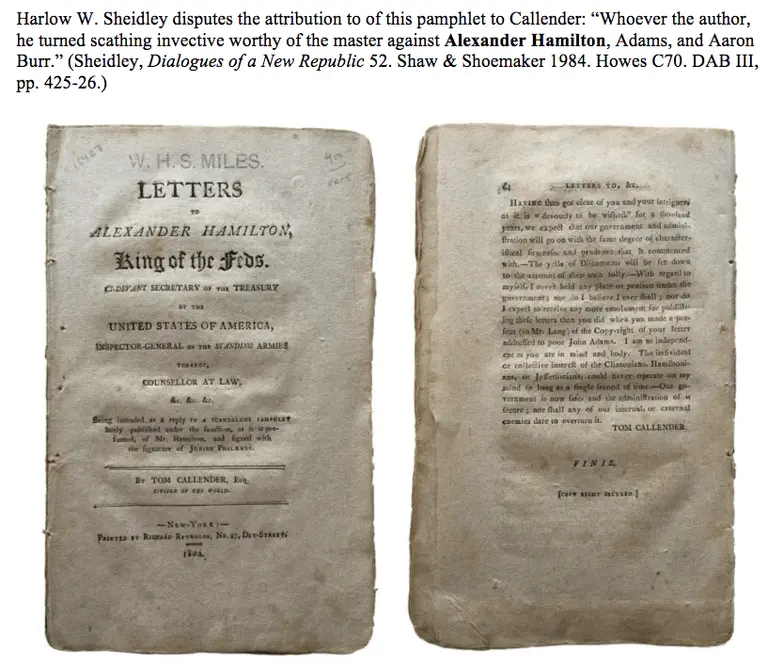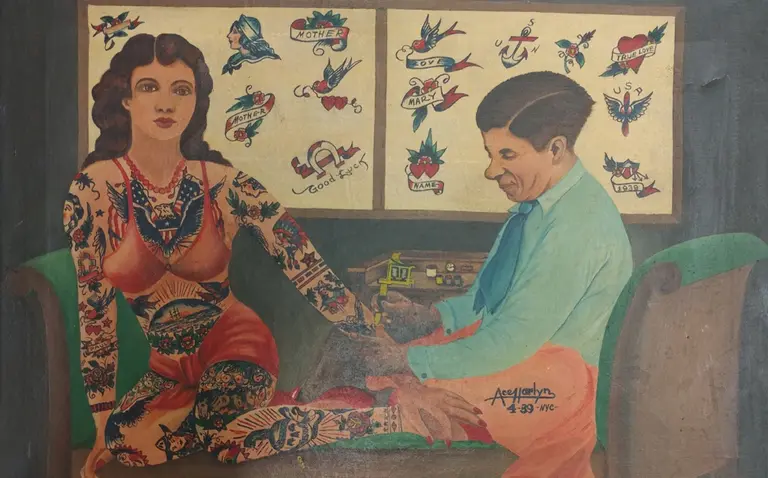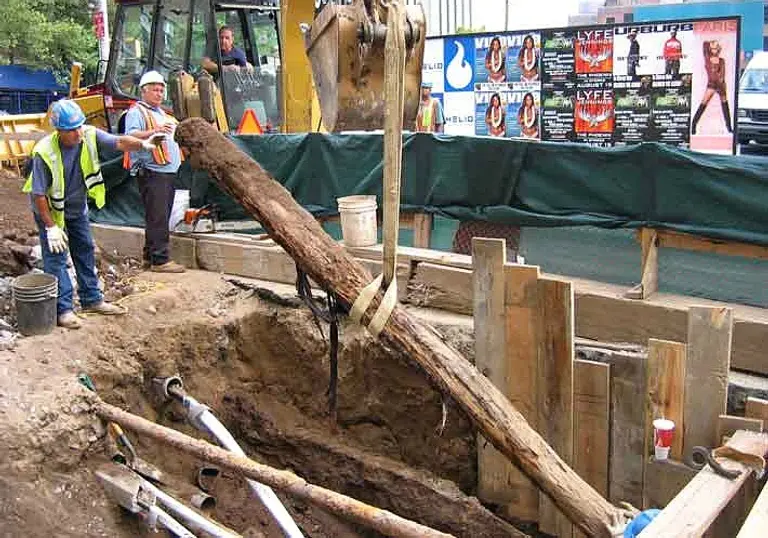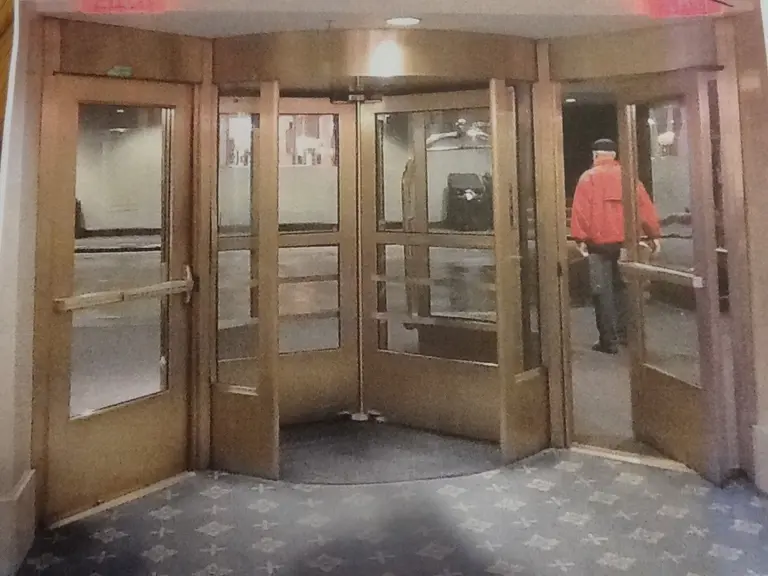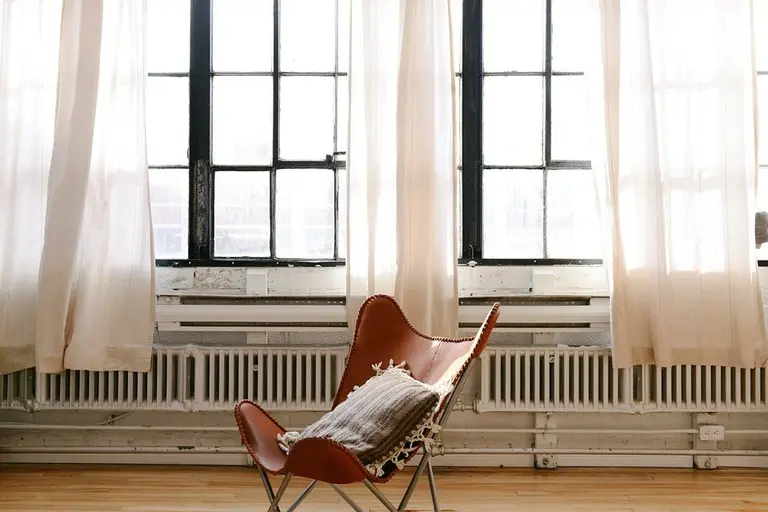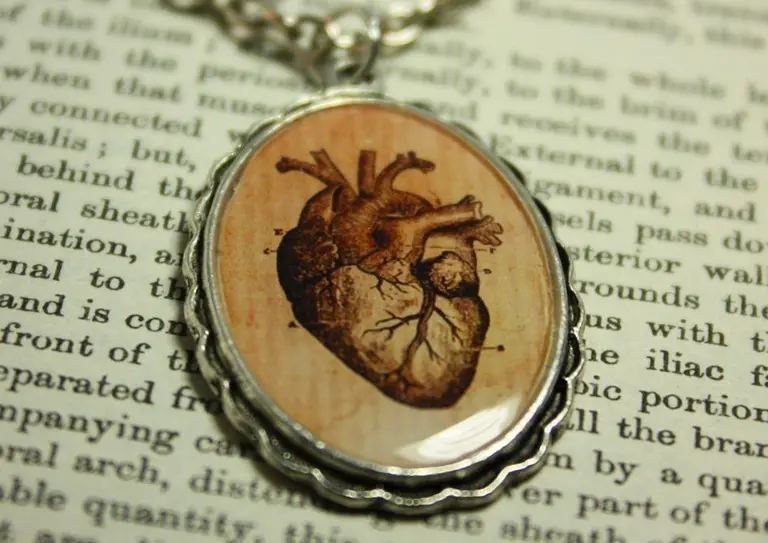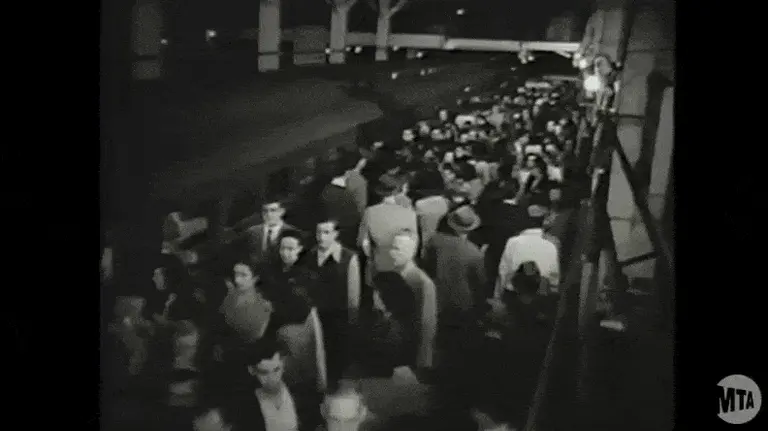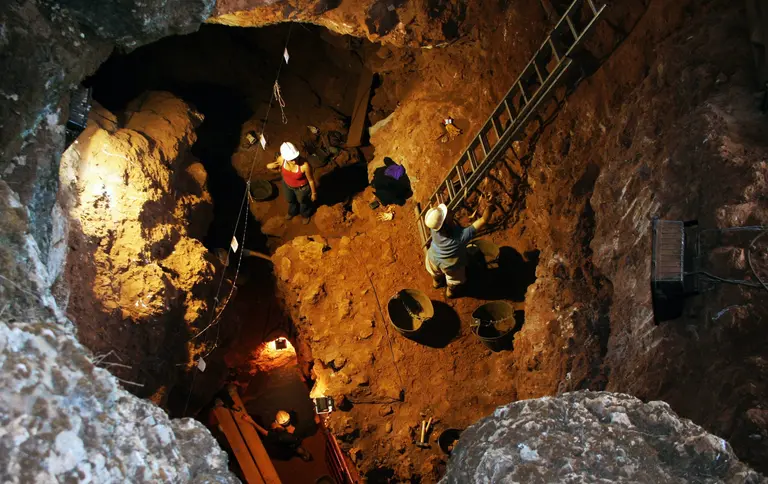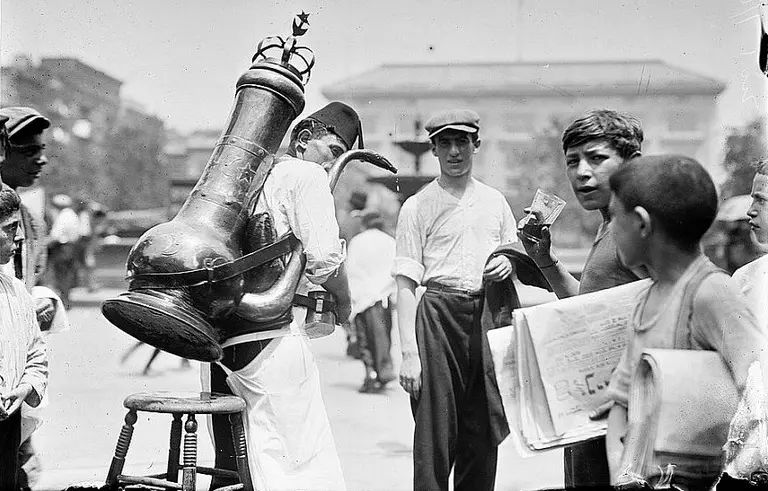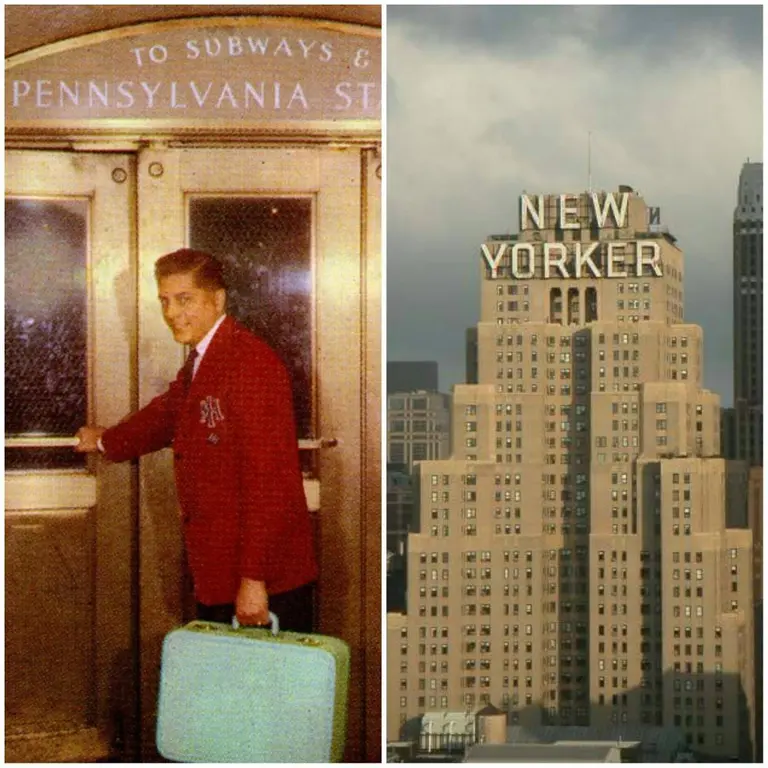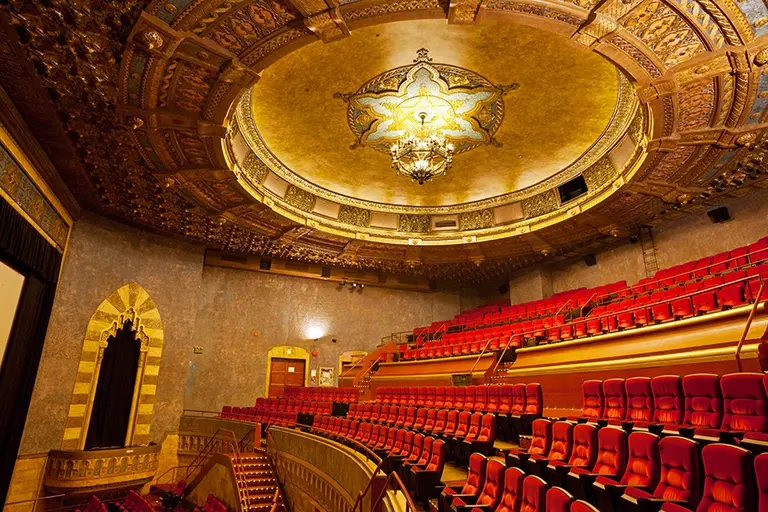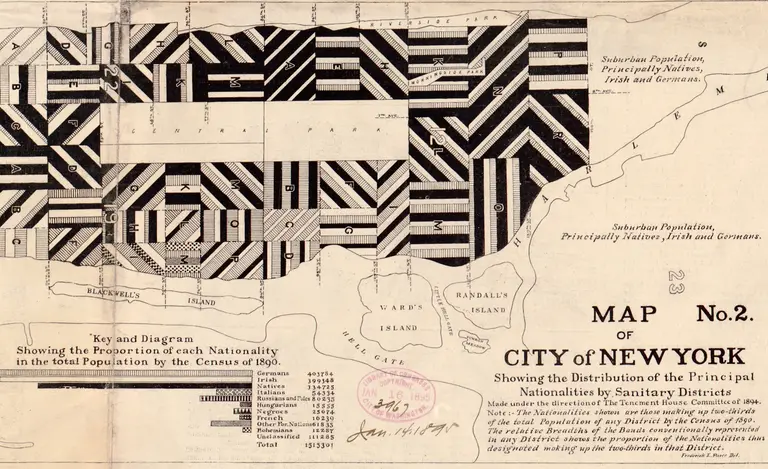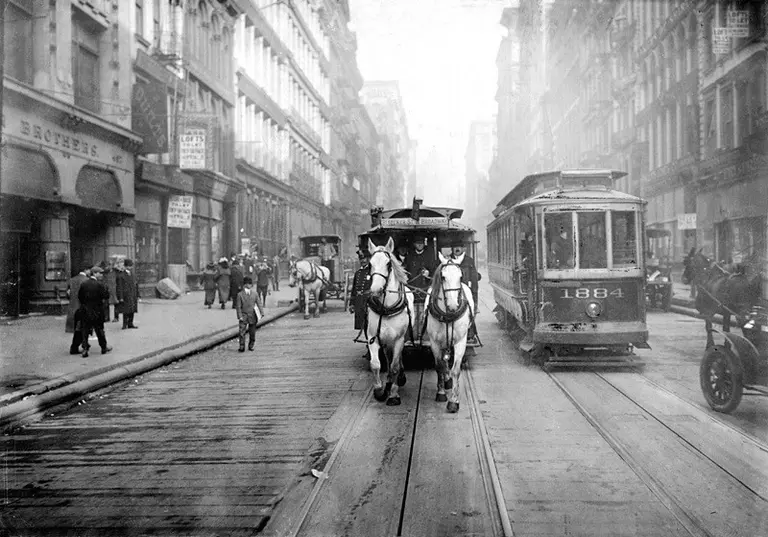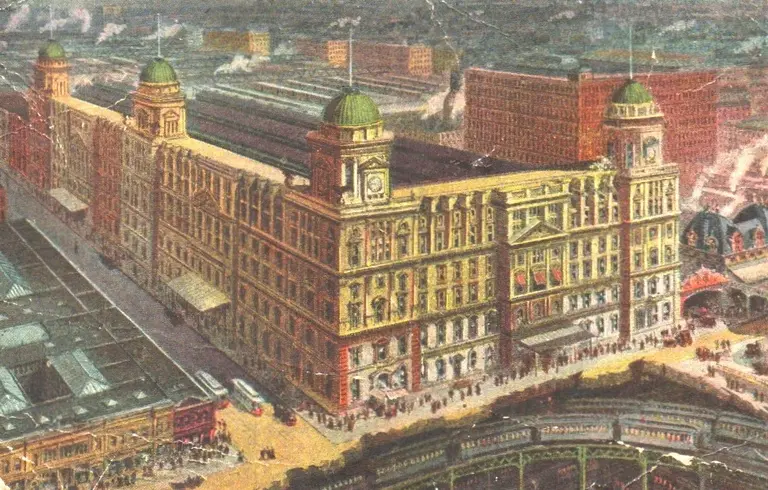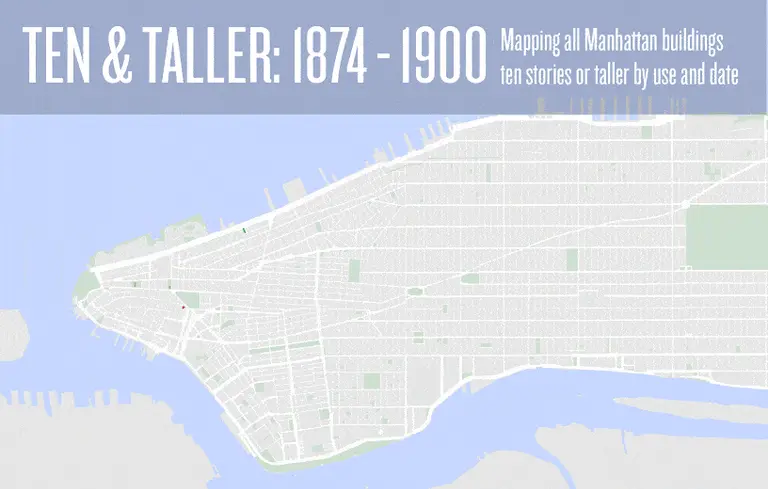March 1, 2017
At the turn of the 18th Century, New York City had a population of 60,515, most of whom lived and worked below Canal Street. Until this time, residents got their water from streams, ponds, and wells, but with more and more people moving in, this system became extremely polluted and inefficient. In fact, in the summer of 1798, 2,000 people died from a yellow fever epidemic, which doctors believed came from filthy swamp water and led the city to decide it needed a piping system to bring in fresh water. Looking to make a personal profit, Aaron Burr stepped in and established a private company to create the city's first waterworks system, constructing a cheap and ill-conceived network of wooden water mains. Though these logs were eventually replaced by the cast iron pipes we use today, they still live on both under and above ground in the city.
The whole history here
